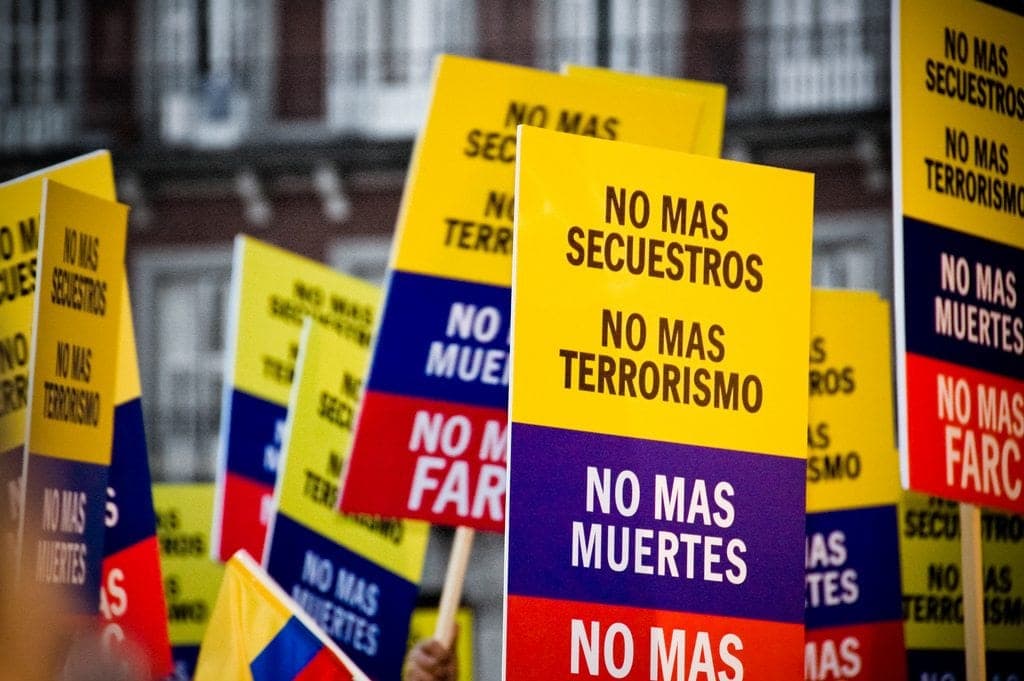After three years of peace talks to end the world’s longest-running armed conflict, which has caused the death of over 200,000 people, the Colombian government and the Revolutionary Armed Forces of Colombia signed a ceasefire on Thursday.
The Catholic Church, however, has warned both sides: their signature can’t just be a symbol.
Archbishop Luis Augusto Castro Quiroga, head of the Colombian Bishop’s Conference and a big supporter of the negotiations, made the appeal for the peace accords signed by the government and the guerrillas known by its Spanish acronym FARC to be honored in practice.
“We need a clear sign from the table [discussing the deal] that the weapons will effectively, and not only symbolically, be given up and publicly destroyed,” Castro said.
The Catholic Church has been a key player in the negotiations that took place in Havana, Cuba, so much so that the archbishop is flying with president Juan Manuel Santos to the island nation where the ceasefire will be signed.
According to the website of the Colombian Bishops’s Conference, Castro on Wednesday also said that the country is distressed by claims that say it’s possible for the guerrillas to re-take the cities at some point under their command. For this reason, he insisted, the Colombian people need a clear sign which proves that this is more than an empty agreement.
Only then, Castro believes, will ordinary Colombians feel like they can support the peace that’s been brokered.
Speaking to the Catholic News Service, Castro also said that one of the biggest challenges moving forward will be interpreting the negotiations to the faithful, including within the Church, with many bishops still not convinced by the process.
“That’s not easy, because it’s a difficult process to understand,” he said. “And we have to recognize that the Church is not united about this. Many in the Church are against the peace process.”
Although the majority of the bishop’s conference has long defended a political solution to the conflict, there are some who believe the government should never negotiate with armed terrorists and others afraid there will be no accountability for crimes committed, which have affected an estimated eight million people.
Although much still has to be done, including a definitive peace treaty that goes beyond the ceasefire, Thursday’s signing is considered historic since it will allegedly bring to an end a four-sided war that involves not only the leftist guerrilla FARC and the government’s army, but also rightwing paramilitaries and narco-cartels.
Ahead of Pope Francis’s visit to Cuba last September, there were rumors of a possible meeting between the pontiff and the rebels. It never happened, but this February, as he was headed back to the island for his historic encounter with Russian Orthodox Patriarch Kirill, he promised to visit Colombia in 2017 if the peace talks advanced.
A few months later, in April, “Timochenko,” the commander-in-chief of the left-wing guerrilla, sent an open letter to Francis calling for his intervention.
“Paramilitary organizations are untying a criminal offensive in our country, aimed at demoralizing the friends of peace, summoning them by force of arms to act against the process, able to intimidate several regions of the country,” Timochenko said.
With brief intermissions, Colombia has been at war since 1948. Back then, the two players were the military wings of the Liberal and Conservative parties, which tore Colombia in two.
The fight then was over land rights and ownership, but the straw that broke the camel’s back was the assassination of the reformist Liberal candidate Jorge Eliécier Gaitán.
In 1959, the paramilitary group Triple A (American Anti-Communist Alliance) was born, and five years later, the FARC, with other guerrilla groups joined in.
Throughout the 1970s and 1980s, Pablo Escobar’s murderous Medellin cartel waged a total war on the state, often helped by the paramilitary movement.
Escobar was killed in 1993, and the paramilitary dissolved under international criticism for the widespread amnesty the group received, with a consequent lack of due process for victims. The drug trade continues to be a key element in the conflict, with the FARC taking over much of the business.
Among the many challenges Colombia faces towards its pacification is the approval of the ceasefire by the general public, which will be expressed through a referendum.
The talks that led to the signing began in Oslo, Norway, in 2012, and they were the fourth attempt in the last three decades to end the war. Both Norway and Cuba acted as mediators in the peace process.

















